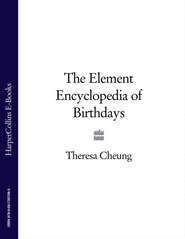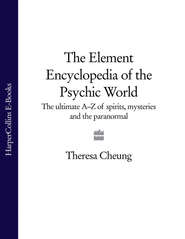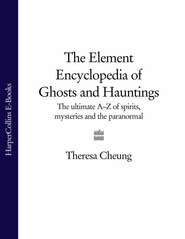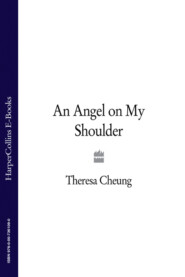По всем вопросам обращайтесь на: info@litportal.ru
(©) 2003-2024.
✖
The Dream Dictionary from A to Z [Revised edition]: The Ultimate A–Z to Interpret the Secrets of Your Dreams
Автор
Год написания книги
2019
Настройки чтения
Размер шрифта
Высота строк
Поля
Although dreams can occur during NREM, researchers have discovered that it is REM sleep which is most associated with dreaming. When sleepers are awakened during REM sleep, they typically recall their dreams. Sometimes people feel temporarily paralyzed if woken during REM, as if something heavy and/or malevolent is pressing down on them. This phenomenon may explain supposed succubus, incubus, and alien abduction experiences.
The first stage of REM sleep lasts around 10 minutes and then you fall back into stages two, three and NREM sleep again, and keep moving backwards and forwards between the stages through the sleep cycle. As the cycle continues, however, the REM phase gets longer and longer, with the longest phase lasting up to 45 minutes. Of all the phases of REM and NREM sleep, the final REM phases are the ones from which you are most likely to recall your dreams.
The emotional center of the brain is more active than the logical center when we are dreaming. But, intriguingly, scientists have found that dreaming about faces is linked to the areas of the brain involved in facial recognition when we are awake, suggesting that the dreaming and waking brain may not be as different as is often thought.
We Sleep to Dream
And one day there will come a great awakening when we shall realize that life itself was a great dream.
– Chuang-Tzu
Experiments have proved that sleep is essential for life. Rats typically live for two to three years; rats deprived of all stages of sleep live for about three weeks, and rats deprived of only REM sleep survive for about five. Other research has shown that both NREM and REM sleep are essential for preserving memory, but if people are repeatedly woken during periods of REM sleep – which means they are deprived of their dreamtime – they become anxious, irritable and stressed. This suggests that all stages of sleep are vital for physical and mental health, and REM sleep – when you are most likely to dream – is essential for your emotional and psychological well-being.
Therefore, although we still don’t know why we sleep, it is entirely possible that one of the major reasons we sleep is to dream.
How Much Sleep Do We Need?
We spend up to a third of our lives sleeping, which means that if you reach the age of 100 you will have been asleep for around 33 years. The amount of sleep each person needs to feel healthy and think clearly depends on many factors, including age and activity levels. For example, babies need around 14–15 hours a day, while teenagers need around 9–10 hours. For most moderately active adults around 7–8 hours of sleep a night appears to be the average amount needed, although some people need as few as 5 hours and others need up to 10. Elderly people tend to need a little less sleep, around 6–7 hours a night, and women tend to need more sleep than men. Women also tend to be lighter sleepers and more likely to wake during the night than men.
So, What Are Dreams?
Life is a dream, realize it.
– Sathya Sai Baba
Dreams captivate us. But what are they? Where do they come from? Why do we have them? Do they mean anything? Are they simply a collection of memories and random associations, or insightful gifts from our intuition? Can they help us make decisions in our waking lives?
We have learned a great deal about dreaming – and, as mentioned previously, all the indications are that dreams are crucial for your mental and emotional health – but there is still so much we don’t know: dreams remain as mysterious as ever. This elusiveness hasn’t stopped people theorizing about why we have them.
There is a school of thought which believes that dreams are meaningless, or just random neuron activity responding to biochemical changes. Others believe dreams are simply your brain’s way of decluttering or sorting out and consolidating memories and associations. However, most modern psychologists, scientists, and sleep researchers believe dreams are far more than that.
One prominent theory is that dreams reveal hidden insights, wishes, and truths about the dreamer. The world of the dream is a dramatization of the dreamer’s personal or inner world. Another popular theory suggests dreams can help you process or come to terms with difficult emotions to achieve psychological or emotional balance. Dreams may also help you rehearse, practice, and prepare different responses to situations or scenarios, in other words, they allow you to role play in a safe way.
There is also the popular ‘sleep on it’ view that dreams are a source of creative inspiration and can help with problem solving. One less prominent theory, but which has its supporters, is that dreams are a form of consciousness that can unite past, present and future and offer us glimpses of potential futures.
One thing that unites all these different theories is the belief that, whatever dreams are, they are good for you. They help you live a better, happier, life.
A Brief History of Dream Interpretation
Now Allah has created the dream not only as a means of guidance and instruction, I refer to the dream, but he has made it a window on the world of the unseen.
– The Prophet Mohammed
The notion that dreaming is positive, and dream interpretation a powerful tool, dates back millennia. Ancient art and literature are rich in dream references. Back in the mists of time dreams were not so much regarded as tools for personal growth (as they are today) but believed to have supernatural or prophetic significance. For example, the ancient Greeks, Romans, and Egyptians all believed dreams had miraculous healing powers, and the Bible promotes the idea that dreams are divine messages.
Other cultures, such as the Australian Aborigines and many African and Native American tribes, have always believed that dreams are a way to enter an unseen spirit realm. To this day, dream interpretation plays a major part in these tribal societies. The Inuit of Canada believe that when a person dreams, their soul leaves their body and enters the spirit realm.
As far as dream interpretation is concerned the Egyptians are thought to be the pioneers, producing the earliest known dream dictionary, written over 4,000 years ago. Called the Chester Beatty Papyrus today, it came from Thebes in Egypt and is kept in the British Museum. It is the ancient Greeks, however, who first proposed the theory that dreams are not from some external or divine source but are internal communications, or the divine spark within. Plato (427–347 BC) suggested that dreams were representations of hidden wishes and desires, while his pupil Aristotle (384–322 BC) suggested that dreams shared collective or similar themes. It was the ‘father of medicine’ Hippocrates (460–377 BC) who presented the idea that dream symbols had a physiological interpretation – for example, fire denoted indigestion – and should be used as diagnostic tools.
Artemidorus (AD 138–180), a Roman living in Greek Asia Minor, is believed to be the first dream researcher to focus fully on dream symbols and themes. He wrote a book entitled Oneirocritica (The Interpretation of Dreams) that is still in print today. He postulated that dream symbols had certain meanings but that the most important aspect of dream interpretation was the personal significance of the dream symbol to the dreamer. (This author is in total agreement with Artemidorus about the personal significance of dreams and their meaning, and can only dream that this dictionary stays in print as long as his remarkable manuscript!)
Throughout medieval Europe, even though the early Christians respected dreams for their spiritual significance, the repressive control of the Roman Catholic Church put a stop to any attempts at dream interpretation. By the end of the 15th century dreams were regarded as no longer significant, and a century or so later even Shakespeare called them ‘children of the idle brain’. The ‘dreams are meaningless’ school of thought persisted well into the 18th century.
During the early 19th century, when the restrictive influence of the Church began to wane and the members of the Romantic movement – in their quest for spontaneous expression – rediscovered the potential of dreams, a revival of interest in dream interpretation began. Popular dream dictionaries, such as Raphael’s Royal Book of Dreams (1830) trickled into the mainstream and set the stage for Freud and Jung, the two giants of dream interpretation whose theories continue to influence the way dreams are interpreted today.
The Revolution of Freud and Jung
Dreams are often most profound when they seem the most crazy.
– Sigmund Freud
Austrian psychoanalyst Sigmund Freud (1858–1939) opened the door to the scientific study of dreams with his book The Interpretation of Dreams (1900). At the time, when prudish attitudes were prevalent, he caused general outrage with his controversial theory that dreams are wish-fulfillment fantasies that have their origins in our infantile urges, and in particular our sexual desires.
Freud believed that the human mind is made up of the id (the primitive or unconscious mind), the ego (the conscious mind which regulates the id’s antisocial instincts with a self-defense mechanism), and the superego (which is the consciousness that in turn supervises and modifies the ego). According to Freud, the id is controlled by the pleasure principle (the urge to gratify its needs), and the instinct that the ego finds hardest to manage is the sexual drive first awakened in childhood. The id comes to prominence in dreams, when it expresses in symbolic language the urges repressed when we are awake. Symbols are used because if these drives were expressed literally, the ego would be shocked into waking up.
To interpret a dream successfully, the symbols need to be uncovered and their true meaning discovered. The way that Freud suggested doing this was a technique called ‘free association’, or spontaneously expressing the responses that immediately spring to mind when certain words relating to the dream are put forward. The aim is to limit interference from the ego to discover the dreamer’s unconscious instincts.
Swiss analytical psychologist Carl Gustav Jung (1875–1965), although an initial supporter of Freud’s ideas, could never fully agree with them. He felt there was far more to dreams than hidden sexual frustration, and put forward the theory of the ‘collective unconscious’: a storehouse of inherited patterns of experiences and instincts common to humans and expressed in dreams in universal symbols, which he called ‘archetypes’.
According to Jungian theory, the psyche is made up of the personal unconscious and the collective unconscious, and when a symbol appears in a dream it is important to decide whether it relates to us personally or is an archetype. The way Jung suggested we do this is by a technique called ‘direct association’, i.e. concentrating only on the dream symbol when you think about the qualities associated with it.
Jung speculated that the unconscious mind projected dream symbols in an attempt to bring the conscious and unconscious mind into a state of balance he called ‘individuation’. According to his theory, the only way the unconscious mind can express itself fully is in dreams, so it will flood our dreams with symbolic messages that reflect our current progress in waking life. These messages can bring comfort and guidance, or bring repressed urges to the fore, but their aim is the same – to encourage personal growth and self-development. However, before we can benefit from such intuitive wisdom, we first of all need to understand the language of symbols.
Other Important Dream Theorists
If you can dream and not make dreams your master …
– Rudyard Kipling
Austrian psychologist Alfred Adler (1870–1937) suggested that dreams are all about wish-fulfillment because they allow the dreamers to have skills and powers denied to them in waking life. According to Adler, ‘The purpose of dreams must be in the feelings they arouse.’
Gestalt psychologist Fritz Perls (1893–1970) believed that dreams project hidden aspects of our personalities and the best way to interpret them is to use a non-interpretative interviewing technique. In other words, you ask your dream character or object what they are trying to say. Then you try to adopt the dream’s mindset and answer the questions.
Noted Australian dream expert Gayle Delaney suggests using an interviewing technique that addresses questions such as ‘How did the dream make you feel?’ or ‘How can you connect your dream with your waking life?’ Some dream theorists believe dreams deal with problems we can’t solve in waking life and offer solutions. Looking at them in the light of waking day, and believing them to be full of insight, we may sometimes come up with new ideas or insights while studying and interpreting them.
Thanks to the work of Jung and Freud and other influential dream theorists, dream interpretation is now accessible to everyone. It’s more popular today than it has ever been, with people from all walks of life using their dreams as unique and personal sources of guidance and inspiration, or as tools for change, growth, and personal development.
Dreams can offer us profound insights into what is preoccupying us and, although they are likely to forever remain mysterious, interpreting them can be healing and empowering, help us understand ourselves better and shape the decisions we make in our waking lives. As we’ve seen, there are different approaches to the interpretation of dreams and you’ll find a fusion of all of these in this book.
Famous Dreamers
Through the centuries, the dreaming mind has been said to be the source of countless insights, revelations, and even history-changing guidance. Here are just a few well-known examples:
Julius Caesar attributed his decision to cross the Rubicon and march on Rome with his army to a dream, in which he saw himself lying in bed with his mother (his seers told him she represented Mother Rome). And his wife Calpurnia saw his assassination foretold in a dream.
St Francis of Assisi had a dream in which Jesus Christ spoke to him from the Cross, telling him to ‘set my house in order’, and so went on to found the Franciscan Order of friars.
Dante reported that the entire story of the Divine Comedy was revealed to him in a dream he had on Good Friday in 1300. When he died in 1321, some of the original manuscript was lost. His son Jacopo recovered the manuscript thanks to a dream in which his father showed him exactly where to look.











